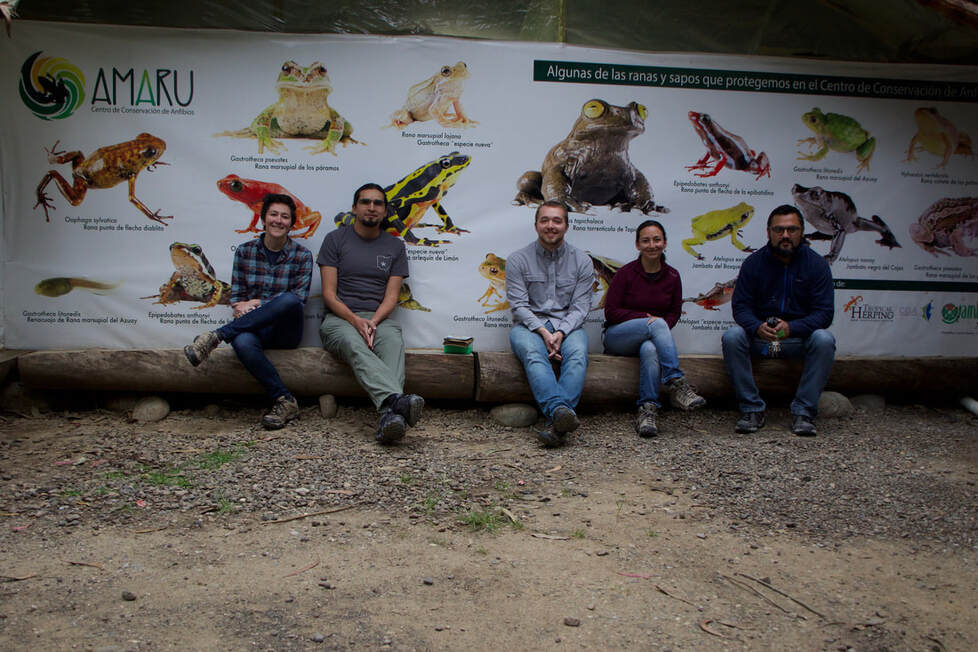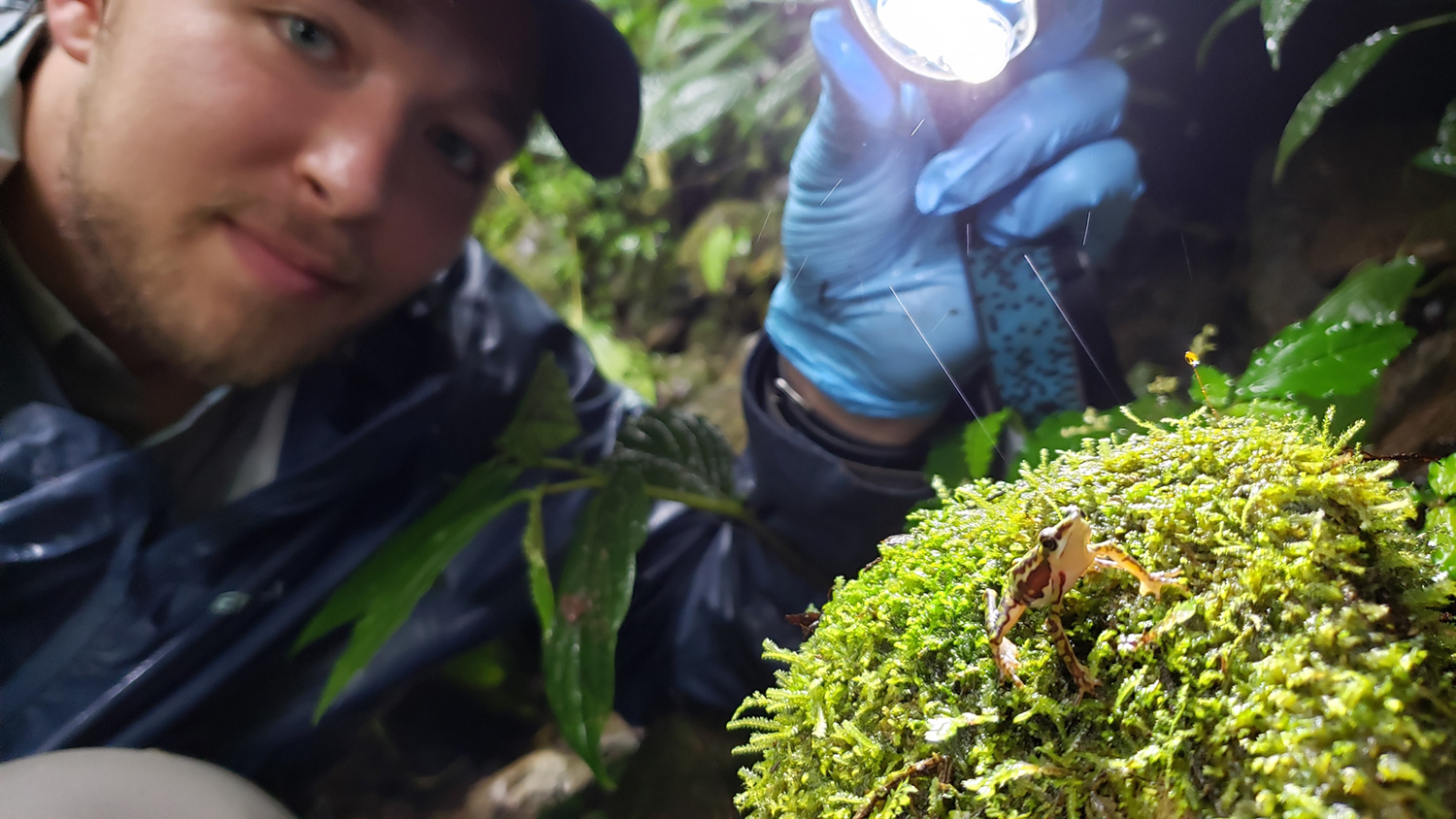Collaboration for conservation
Jaynes and Fitzpatrick collaborated with six researchers from four different institutions in Ecuador for this study.
Other team leaders include Luis Coloma, a senior researcher with the Jambatu Center for the Investigation and Conservation of Amphibians and a finalist for the 2023 Indianapolis Prize, the world’s leading animal conservation award.
He’s been interested in these frogs since he was a child and now works at a center that’s helping breed disappearing species with the goal of eventually reintroducing them into the wild. He’s also part of the Jambato Alliance that formed to better protect rediscovered species in the wild, which was recently highlighted on Twitter by Leonardo DiCaprio.
A cohort of the research team at the Amaru Zoológico Bioparque in Ecuador. Pictured, from left to right, are Sarah Fitzpatrick, David Salazar-Valenzuela, Kyle Jaynes, Mónica Páez-Vacas and Fausto Siavichay. Credit: Ernesto Arbeláez
“We really want people to understand how important our partnerships are. We were invited into this work by our Ecuadorian colleagues,” Fitzpatrick said. “They’ve been working tirelessly on these challenges for decades. There are so many things that they bring to this work that make it possible.”
The team also includes Andrea Terán-Valdez of the Jambatu Center; Mónica Páez-Vacas and David Salazar-Valenzuela of the Universidad Tecnológica Indoamérica
(Indo-American Technological University); Juan Guayasamin of the Universidad San Francisco de Quito (San Francisco University of Quito); and Fausto Siavichay of the Amaru Zoológico Bioparque (Amaru Zoological Biopark).
Invaluable contributions have also come from outside the realm of professional research and conservation. The team works with local communities in Ecuador — including Indigenous communities — that treasure the frogs at least as much as the researchers do.
For example, one of the challenges in accurately classifying a species as rediscovered or returned from extinction was proving it was lost in the first place. For some species, like the starry night harlequin frog that researchers thought was extinct, addressing that challenge was a matter of knowing who to talk to.
“It was only missing to scientists,” Jaynes said. “It was never missing to Indigenous people. They were protecting it.”
“These frogs are gems. It’s not just nerdy scientists who think they are important,” Fitzpatrick said. “They’re culturally iconic. There’s a city in Ecuador named after one of the species.”
MSU doctoral student Kyle Jaynes shines a light on a harlequin frog rediscoveries in Ecuador. Credit: Alex Achig-Vega
Another example of how local communities helped this work is also one of the earliest. The Jambato harlequin frog was once remarkable for how common it was in Ecuador and across the Andes mountain range. In fact, Jambato translates to frog or toad.
People would see these frogs routinely in their yards and, after a rain, covering roadways. That was until the late 1980s, when the amphibians rapidly disappeared in a matter of a couple years.
It wasn’t until 2016 that a 12-year-old boy spotted one in an alfalfa field in his village. According to the Jambato Alliance, he wouldn’t have thought anything of the sighting had it not been for a local pastor offering a reward for finding such a creature. Not long after, the rediscovery was confirmed.
In 2019, when Jaynes and Fitzpatrick had the chance to visit Ecuador, that village was one of the sites they had the opportunity to visit with their colleagues.
“It was very dramatic,” Fitzpatrick said. “We were all spanned out across this field, but nobody thought we were going to see this frog. Then one of our collaborators started shouting in Spanish, ‘I found one!’”
It was a dramatic moment, and the project has been an emotional journey, the researchers said.
Nature isn’t known for giving second chances, but that’s what it’s providing now with dozens of rediscovered species. And Spartan researchers will be part of the team dedicated to making sure these animals don’t disappear again.




